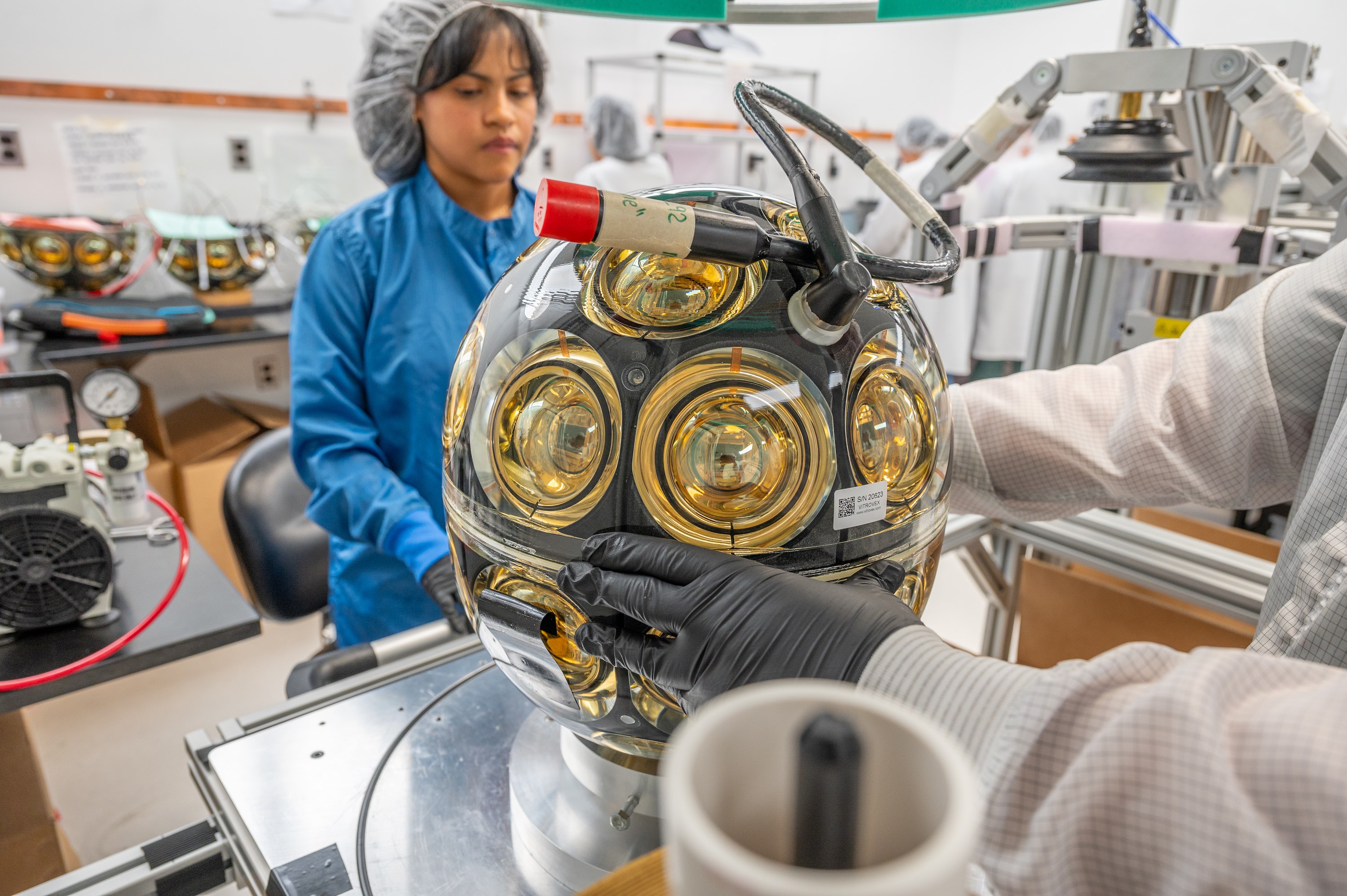
Roughly a year from now, scientists at the IceCube Neutrino Observatory will begin deploying more than 400 multi-photomultiplier digital optical modules, or mDOMS, deep inside a 1 billion-ton block of ice at the South Pole as part of the IceCube Upgrade — a feat powered in part by the work of a team from Michigan State University.
The mDOMs are sensors that look like black and gold soccer balls from the future, and their job is to detect elusive neutrinos, which are invisible, nearly massless subatomic particles that have helped scientists understand some of the most fundamental questions in physics. This upgrade will bring neutrinos into sharper focus.
The MSU IceCube group is essential to the project. Of the 400-plus mDOMs being deployed — other units and calibration devices are also part of the upgrade — 205 of them will be manufactured and tested by a team of undergraduates, graduate students, engineers and postdoctoral students from MSU. Once their work is done, these sensors will be shipped nearly 9,160 miles from East Lansing to the South Pole.
“This is really important work,” says Emmett Krupczak, a National Science Foundation graduate research fellow and the project lead. MSU is making 205 sensors, and a lab in Germany is creating the rest. “Our undergraduate students are doing high-level technical work. Once these modules are in the ice, they’re not coming back — and MSU students are a pivotal part of making the IceCube Upgrade possible.”
Pablo Rizzo, a junior majoring in mechanical engineering, is one of 18 undergraduate students producing the sensors. He helps test completed sensors that have been placed in a dark freezer to mimic Antarctic conditions. “We’re very fortunate to be here at MSU where the leadership on this project is trusting us, especially as undergrads, and giving us this opportunity to work on IceCube,” he says. “Even if what we’re doing is a small drop in the bucket, it’s very satisfying to feel like the work you’re putting in is helping.”







